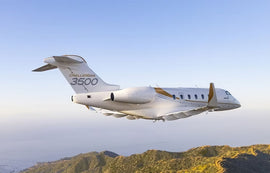
When it comes to maintaining impeccable cleanliness, certain airports stand out for their exceptional standards and attention to detail. Here’s a look at the top ten airports globally that go above and beyond to keep their facilities spotless and welcoming.
1. Tokyo Haneda Airport

Reigning supreme once again, Tokyo Haneda Airport exemplifies Japanese dedication to cleanliness. Handling over 85 million travelers annually, Haneda’s meticulous standards never waver. Behind the scenes, a dedicated cleaning staff works tirelessly around the clock, utilizing advanced technologies such as UV sanitising robots that patrol the terminals late at night. The bathrooms are particularly notable—they feature automatic faucets and toilets, with seats that gently bow when approached—a mechanical gesture that feels uniquely Japanese. The airport’s floors are made from stain-resistant materials designed for easy cleaning, and its air filtration systems ensure consistently high indoor air quality.
2. Singapore Changi Airport

Coming in second, Singapore Changi Airport continues to impress with its unwavering commitment to cleanliness and innovative design. Known for its stunning architecture, including indoor waterfalls and lush green spaces, Changi’s cleanliness standards match its visual appeal. Over 500 dedicated cleaning staff work in coordinated shifts to cover every corner. The airport also employs autonomous scrubbing machines that operate during off-peak hours, ensuring thorough cleaning. Notably, Changi’s waste management system uses centralized vacuum collection to transport waste efficiently, reducing manual handling and contamination risks.
3. Doha Hamad International Airport

Qatar’s flagship airport takes third place with its gleaming marble floors and ultra-modern facilities. Despite its desert environment, Hamad International Airport maintains exceptional cleanliness through zone-specific cleaning teams that ensure consistent standards across all areas. The airport invests heavily in sustainable cleaning solutions, including water reclamation systems and biodegradable cleaning products tailored for its unique materials and finishes.
4. Seoul Incheon International Airport

Seoul’s primary gateway ranks fourth thanks to South Korea’s reputation for cleanliness and efficiency. Incheon combines cutting-edge technology with human oversight to keep spaces feeling fresh and new. It pioneered the use of UV-C disinfection robots that autonomously sanitise public areas, alongside a team of staff dressed in colour-coded uniforms for organized operations. During peak times, rest areas are sanitized every 30 minutes, showcasing their dedication to passenger comfort and hygiene.
5. Hong Kong International Airport

Despite operating on an artificial island exposed to challenging weather conditions, Hong Kong International Airport maintains high cleanliness standards. The airport’s advanced monitoring system uses sensors to detect areas needing immediate attention, dispatching cleaning teams in real time. Automated occupancy sensors in bathrooms help adjust cleaning schedules based on usage, ensuring facilities are always hygienic.
6. Centrair Nagoya Airport

Another Japanese highlight, Centrair Nagoya Airport serves Japan’s industrial heartland with a strong commitment to cleanliness. Though smaller than Tokyo’s airports, it upholds the same high standards. The staff undergo comprehensive training emphasizing both technical skills and customer service, acting as ambassadors of quality. The airport’s wooden architectural features receive specialized cleaning to preserve their natural beauty while ensuring hygiene.
7. Tokyo Narita International Airport

Tokyo’s second major airport maintains its reputation for cleanliness despite being older than Haneda. Narita’s ongoing renovation and maintenance programs help uphold high standards. The staff is trained to be culturally sensitive, respecting diverse passenger behaviors. Innovative AI-assisted waste sorting stations help travelers separate recyclables properly, reducing contamination.
8. Kansai International Airport

Built on a man-made island in Osaka Bay, Kansai faces unique challenges from its marine environment, such as salt residue and humidity. Yet, it maintains impressive cleanliness through specialized cleaning systems designed for these conditions. The terminal’s extensive use of natural light not only conserves energy but also helps keep the space hygienic. The staff uses specially formulated solutions to protect the steel structures from corrosion while keeping the facilities spotless.
9. Taiwan Taoyuan International Airport

Taiwan’s main international gateway places ninth thanks to systematic modernization of its facilities and cleaning protocols. Staff receive quarterly training to ensure consistent standards, and digital verification systems using QR codes help supervisors confirm task completion efficiently. The airport also maintains a dedicated quick-response cleaning team ready to address any unexpected messes swiftly.
10. Zurich Airport

Representing Switzerland’s famed precision, Zurich Airport rounds out the top ten. It emphasizes sustainability, with most cleaning products meeting strict environmental standards. The airport’s waste management system achieves over 60% recycling rates, thanks to diligent separation and processing. Cleaning schedules are carefully coordinated with flight operations to maximize efficiency while minimizing passenger disruption, reflecting the meticulous planning characteristic of Swiss excellence.

